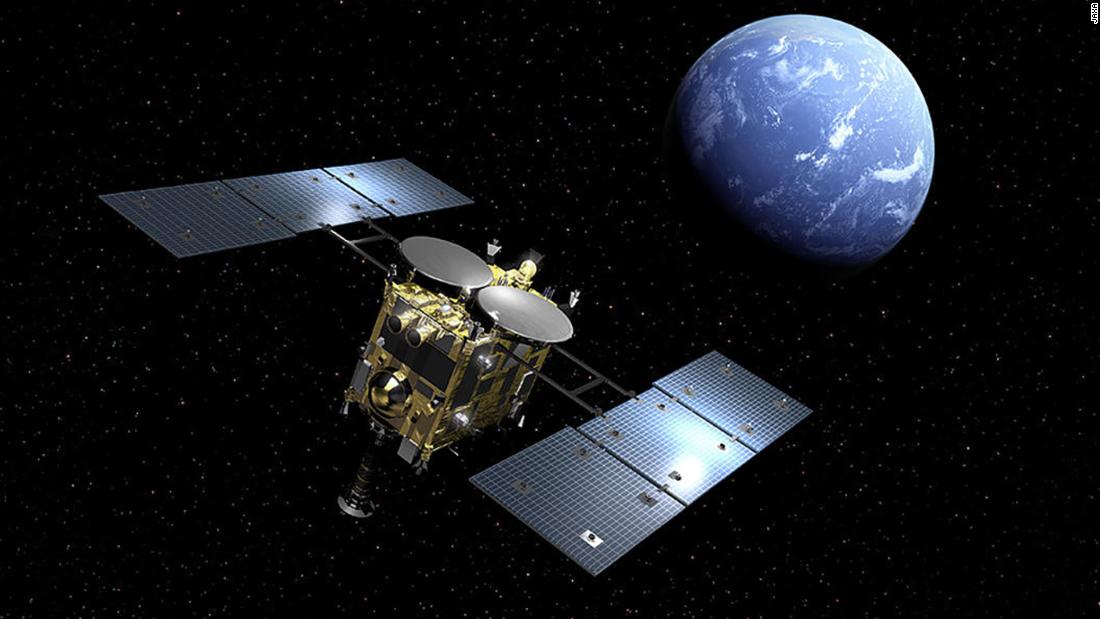
The sample was deposited on Earth by a capsule in South Australia on December 6. JAXA teams were able to retrieve the capsule at the landing site and conduct some preliminary tests of the gas inside the capsule before it was sent to Japan.
The gas was the first step in helping the researchers confirm that the spacecraft successfully collected a sample from Ryugu in 2019 when the spacecraft visited the asteroid.
Researchers confirmed that the gas came from Ryugu because their analysis of the gas shows that it differs from Earth’s atmospheric composition. Two separate analyzes, one in Australia on December 7 and another between December 10 and 11 at the Extraterrestrial Sample Curation Center at JAXA Sagamihara Campus, helped the teams achieve the same result.
The gas likely came from the accumulated material on the surface and below the surface of the asteroid itself.
The researchers will continue to open the capsule containing the sample to understand more about the gas.
The team also confirmed that black grains of sand are also in the sample container, further confirmation that there is asteroid material in the capsule.
By the end of 2021, JAXA will share small samples of Ryugu with six teams of scientists around the world.
Meanwhile, Hayabusa2 continues on its way after flying over Earth in early December to drop off the capsule and visit more asteroids in the future.
Hayabusa2 launched on December 3, 2014, arriving near the near-Earth asteroid Ryugu in June 2018. The spacecraft collected a sample of the asteroid’s surface on February 22, 2019, and then fired a copper ‘bullet’ into the asteroid around a 33-foot-wide impact crater. A sample was taken from this crater on 11 July 2019.
Hayabusa2 then left the asteroid in November 2019 and traveled back to Earth.
All in all, the mission’s scientists believe that one gram of material has been collected, but they won’t know for sure until they’ve opened it fully.
“One gram may sound small, but to us one gram is huge,” said Masaki Fujimoto, deputy director general of the solar system sciences division at JAXA, at an online briefing hosted by the Australian Science Media Center. “It is enough to answer our scientific questions.”
The agency’s first Hayabusa mission returned samples from the asteroid Itokawa to Earth in June 2010, but scientists said that due to the failure of the spacecraft’s sampling device, they could only extract micrograms of dust from the asteroid.
“Ryugu is linked to the process that made our planet habitable,” said Fujimoto. “The Earth was born dry; it didn’t start with water. We think that distant bodies like Ryugu came to the innermost part of the solar system, hit the Earth, delivered water and made it habitable. That’s the basic question we’re looking for and that.” we need samples to solve that. “
Asteroids are like remnants of the formation of our solar system, they preserve information about the origin of planets and the vital elements that make life on Earth possible.
The NASA OSIRIS-REx mission recently collected a sample from another near-Earth asteroid, Bennu, which is similar in composition to Ryugu. Based on early data from both missions, scientists working on both missions believe it is possible that these two asteroids once belonged to the same larger parent body before it was broken apart by an impact.
The Bennu monster will be returned to Earth by 2023.
Patrick Michel, research director at the French National Center for Scientific Research in Paris, is a researcher for both missions.
“It’s really important to realize that no two asteroids are the same,” Michel told CNN in October. “Even if Bennu and Ryugu share some intriguing similarities and belong to the same category (primitive), they also have some very interesting differences. And these samples will keep generations of researchers busy as many will be preserved for future generations who will benefit from the increase in technology and accuracy of the instruments used to analyze them. “

